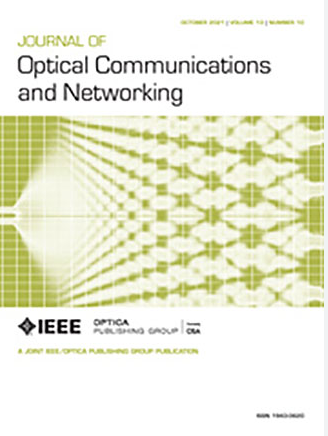On the generalization of cognitive optical networking applications using composable machine learning
IF 4
2区 计算机科学
Q1 COMPUTER SCIENCE, HARDWARE & ARCHITECTURE
引用次数: 0
Abstract
Model generalization characterizes the sustainability of machine learning (ML) designs applied to novel system states and therefore plays a vital role toward the realization of cognitive networking. In this paper, we present a composable ML framework (namely, CompML), aiming at generalizing ML-aided cognitive applications for optical networks. CompML makes use of three basic functional modules, i.e., the Loading, Recursion, and Readout modules, to model the loading/initialization processes (e.g., the launch of a signal), extract cumulative features by recursive operations, and produce model inferences, respectively. By the composition of the three modules and adoption of an end-to-end training mechanism, CompML allows for generalizing multiple tasks of the same domain [e.g., quality-of-transmission (QoT) estimation for different lightpaths]. We perform case studies of CompML on QoT estimation and nonlinearity compensation using both simulation and experimental data. Results show the superior generalization ability of CompML compared with the baselines, achieving mean absolute error (MAE) for generalized signal-to-noise ratio (GSNR) prediction error of below 1.06 dB for unseen lightpaths and up to 3 dB利用可组合机器学习实现认知光网络应用的通用化
模型泛化是将机器学习(ML)设计应用于新系统状态的可持续性特征,因此对实现认知网络起着至关重要的作用。在本文中,我们提出了一个可组合的 ML 框架(即 CompML),旨在将 ML 辅助的认知应用推广到光网络中。CompML 利用三个基本功能模块,即加载模块、递归模块和读出模块,分别对加载/初始化过程(如信号发射)、通过递归操作提取累积特征和产生模型推断进行建模。通过这三个模块的组合和采用端到端训练机制,CompML 可以对同一领域的多个任务(如不同光路的传输质量(QoT)估计)进行泛化。我们利用模拟和实验数据对 CompML 的 QoT 估算和非线性补偿进行了案例研究。结果表明,与基线相比,CompML 的泛化能力更强,对于未见光路,泛化信噪比 (GSNR) 预测误差的平均绝对误差 (MAE) 低于 1.06 dB,对于非线性补偿,平均绝对误差 (MAE) 可提高 3 dB ${Q}$ 因子。
本文章由计算机程序翻译,如有差异,请以英文原文为准。
求助全文
约1分钟内获得全文
求助全文
来源期刊
CiteScore
9.40
自引率
16.00%
发文量
104
审稿时长
4 months
期刊介绍:
The scope of the Journal includes advances in the state-of-the-art of optical networking science, technology, and engineering. Both theoretical contributions (including new techniques, concepts, analyses, and economic studies) and practical contributions (including optical networking experiments, prototypes, and new applications) are encouraged. Subareas of interest include the architecture and design of optical networks, optical network survivability and security, software-defined optical networking, elastic optical networks, data and control plane advances, network management related innovation, and optical access networks. Enabling technologies and their applications are suitable topics only if the results are shown to directly impact optical networking beyond simple point-to-point networks.

 求助内容:
求助内容: 应助结果提醒方式:
应助结果提醒方式:


